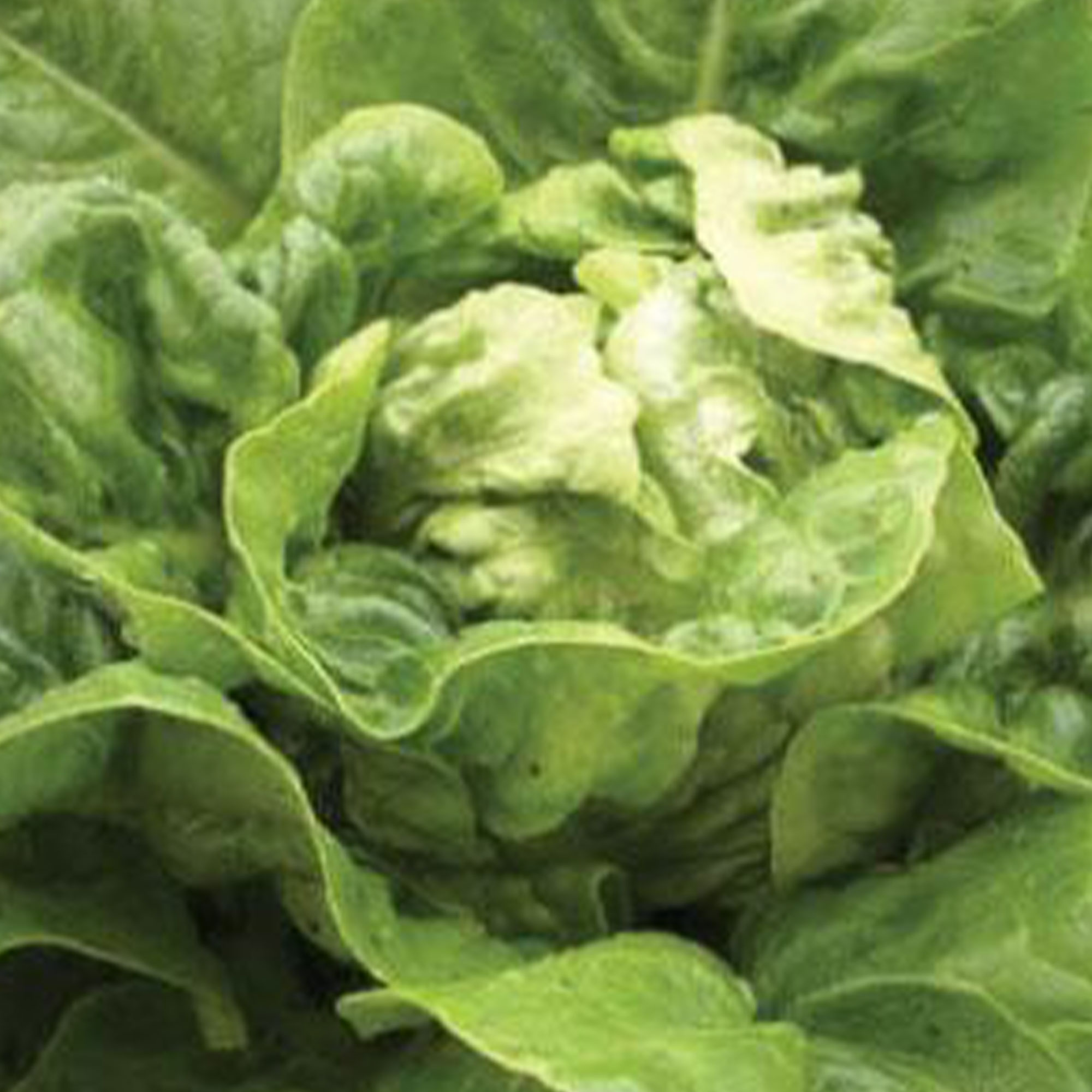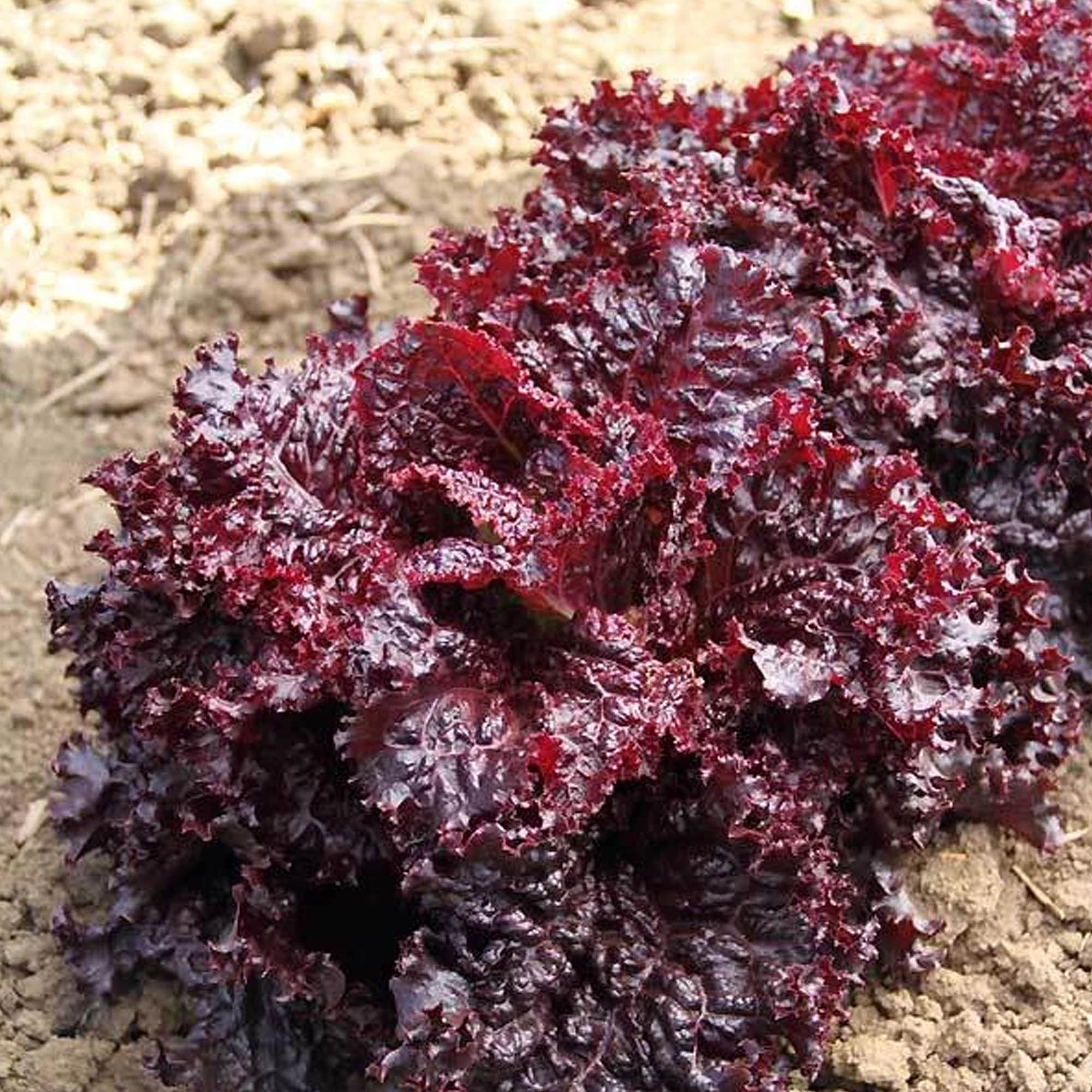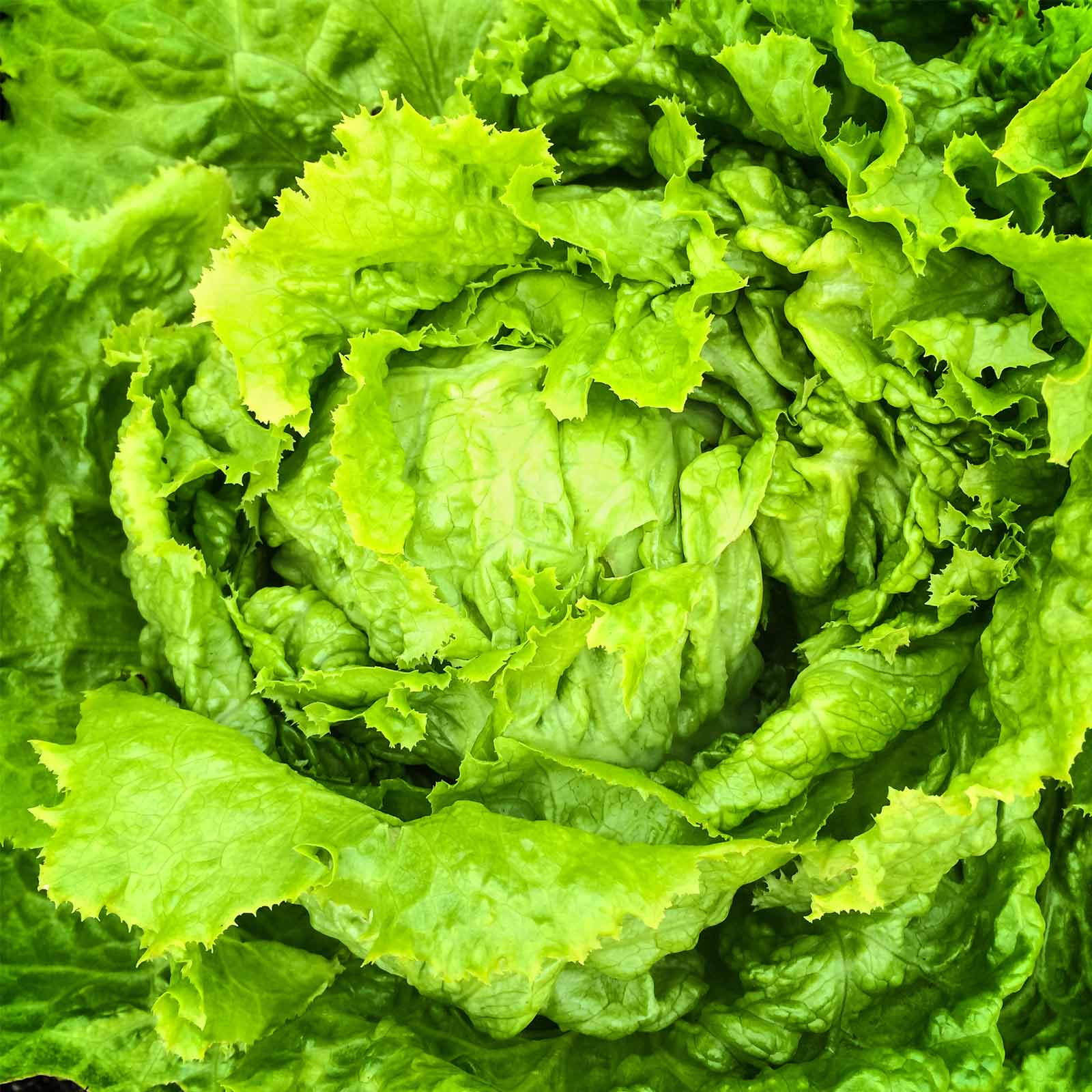About Lettuce Plant
Lettuce (Lactuca sativa) is a leafy vegetable that belongs to the Aster family (Asteraceae). It is usually grown as an annual crop and harvested before it flowers. Lettuce can be grown in various climates but prefers cool weather and moist soil. There are four main types of lettuce plants: celtuce, head, leaf, and cos. Each type has different shapes, colors, and textures of leaves. Lettuce is a good source of vitamins K and A and is commonly used in salads, sandwiches, wraps, and soups.
Where to Buy Lettuce Seeds (Top 3 Picks)

70 days. This delightful miniature romaine type lettuce can be planted closer than its … [More]

55 days. One of the most deeply curled of loose leaf lettuces. Beautiful magenta leaves… [More]

80 days. Heirloom. Also known as ‘Ewing’s Excelsior’, ‘Gardener’s Favorite’ and ‘King o… [More]
Lettuce Seeds Germination Instructions
Tools you will need:
Lettuce seeds are easy to germinate and grow, but they require some care and attention. Here are some tips to help you get started:
- Choose a suitable variety of lettuce for your climate and season. Some types of lettuce prefer cooler temperatures while others can tolerate heat and drought. You can also look for varieties that are resistant to pests and diseases.
- Prepare a seed tray or a pot with good drainage and fill it with moist potting mix. You can also sow lettuce seeds directly in the garden, but make sure the soil is loose and weed-free.
- Sprinkle the lettuce seeds thinly over the surface of the soil and cover them lightly with a thin layer of potting mix. Do not bury them too deep as they need some light to germinate.
- Place the seed tray or pot in a warm and bright location but avoid direct sunlight. The ideal temperature for germination is between 15°C and 21°C (60°F and 70°F). Keep the soil moist but not soggy, and mist it regularly with a spray bottle.
- You should see the first seedlings emerge within 7 to 10 days. Thin them out to avoid overcrowding and transplant them to larger containers or directly in the garden when they have 3 to 4 true leaves. You can also harvest some of the thinnings as baby lettuce.
- Water the lettuce plants regularly and evenly but do not overwater them. Lettuce likes moist soil but not when it is waterlogged. You can also apply a balanced liquid fertilizer every two weeks to boost their growth and flavor.
Best Soil & Container For Growing Lettuce

The best soil for growing lettuce is loose, well-draining soil rich in organic matter.
Lettuce prefers a soil pH between 6.0 and 7.0 and a low nitrogen fertilizer. Organic matter such as compost, rotten manure, or leaf molds can improve soil fertility and moisture retention.
Lettuce can also be grown in pots with a soil mix that contains 20-50% organic matter.

The container should have a depth of at least 6 inches and a width of 12 inches to be suitable for most lettuce varieties. It should have drainage holes at the bottom to prevent waterlogging and root rot.
Wood, fabric, and clay containers are more suitable as they can moderate temperature fluctuations.
Temperature & Light Requirements For Lettuce Plant

Generally, lettuce needs at least 6 hours of full sun per day, but some types may prefer partial shade or indirect light.
It is advisable to check the specific requirements of the lettuce variety you are growing and adjust accordingly.

Lettuce is a cool-season crop that thrives in temperatures between 10°C and 18°C. If the temperature exceeds 24°C, the plant may bolt, meaning it produces a flower stalk and becomes bitter.
To prevent bolting, lettuce should be planted in early spring or late summer, and shaded from direct sunlight.
Common Pests & Diseases for Lettuce Plant
- Aphids: These are small, soft-bodied insects that suck the sap from the leaves and stems of lettuce plants. Aphids can cause wilting, yellowing, curling, and distortion of the leaves. Aphids can be controlled by spraying insecticidal soap, neem oil, or other organic pesticides. You can also attract beneficial insects such as ladybugs and lacewings that feed on aphids.
- Caterpillars: These are the larvae of various moths and butterflies that feed on the leaves of lettuce plants. Some of the common caterpillars that attack lettuce are cabbage loopers, armyworms, cutworms, and corn earworms. Caterpillars can be controlled by handpicking them off the plants or using biological agents such as Bacillus thuringiensis (Bt) or parasitic wasps.
- Downy mildew: This is a fungal disease that causes yellow to brown spots on the upper surface of the leaves and white to gray fuzzy growth on the lower surface. It can be prevented by planting resistant varieties, avoiding overhead irrigation, improving air circulation, and removing infected plants. It can also be treated with fungicides such as copper or sulfur.
- Fusarium wilt: This is a soil-borne fungal disease that causes wilting, yellowing, and browning of the leaves and stems of lettuce plants. Fusarium wilt can also cause root rot and vascular discoloration. Fusarium wilt can kill young plants or reduce the yield and quality of mature plants. It can be prevented by planting resistant varieties, rotating crops, improving soil drainage, and sterilizing tools and equipment. It can also be treated with fungicides such as azoxystrobin or fludioxonil.
- Bacterial leaf spot: This is a bacterial disease that causes small, dark brown to black spots on the leaves of lettuce plants. The spots may be surrounded by yellow halos or water-soaked margins. It can be prevented by planting disease-free seeds, avoiding overhead irrigation, improving air circulation, and removing infected plants. It can also be treated with copper-based bactericides.
- Lettuce drop: This is a fungal disease that causes lettuce to wilt and collapse. It is more common in warm and humid conditions. The disease affects the roots and lower stems of the lettuce, causing them to rot and turn brown or black. To prevent lettuce drop, practice crop rotation, avoid planting lettuce in poorly drained soil, and remove any infected plants as soon as possible.
- Root nematodes: These are microscopic worms that feed on the roots of lettuce and other plants. They cause stunted growth, yellowing leaves, and wilting. They are more active in warm soil and can spread easily through water or tools. To control root nematodes, use resistant varieties, solarize the soil before planting, and avoid planting lettuce in infested areas for at least three years.
Why is my lettuce not growing?
There are many possible reasons why your lettuce is not growing well and is wilting. Some of the most common ones are:
- Moisture stress: Lettuce needs consistent and adequate watering to thrive. If the soil is too dry or too wet, the lettuce will suffer and wilt. Check the soil moisture regularly and water when the top inch feels dry. Avoid overwatering or waterlogging the soil, which can cause root rot and fungal diseases.
- Summer heat: Lettuce prefers cool weather and does not tolerate high temperatures well. When the temperature rises above 75°F, lettuce may stop growing, become bitter, or bolt to seed. To prevent this, choose heat-tolerant varieties, plant lettuce in partial shade or use shade cloth, and mulch the soil to keep it cool and moist.
FAQs
Will lettuce grow in shade?
Lettuce can grow in shade, but it will be slower and less productive. It needs at least six hours of direct sunlight per day for optimal growth.
How far to plant lettuce apart?
Generally, leaf lettuce can be planted 4 to 6 inches apart, while head lettuce needs 10 to 12 inches of space.
Will lettuce grow back after cutting?
Lettuce plants can be harvested multiple times by cutting off the outer leaves or the entire head, leaving some stems and roots in the ground to regrow.
Will lettuce grow in summer?
Lettuce is a cool-season vegetable that prefers temperatures between 45 and 75 degrees Fahrenheit. However, with some precautions and heat-resistant varieties, you can grow lettuce in the summer too.
Some of the best lettuce types for summer growing are:
- Adriana: A butterhead lettuce with dark green leaves and large plants.
- Cherokee: A Batavian lettuce that matures from loose leaf to compact head with dark red leaves and a nutty flavor.
- Coastal Star: A full-size Romaine lettuce with sturdy, heavy heads of sweet, dark green leaves.
How much lettuce does one plant produce?
Generally, leaf lettuce varieties can produce about 0.5 to 1 pound of leaves per plant, while head lettuce varieties can produce about 1 to 2 pounds of heads per plant.
How long to grow lettuce hydroponically?
Hydroponic lettuce is a fast-growing crop that can be harvested in as little as 3 to 4 weeks after planting.
Will lettuce grow in winter?
Lettuce is a cool-season crop that can tolerate light frosts and low temperatures. However, it may not grow well in winter if the days are too short or the soil is too cold. To grow lettuce in winter, you need to choose a hardy variety, such as romaine or butterhead, and provide adequate protection from harsh weather.




